told in cars
My father had a somewhat unconventional automotive side, made all the odder by the fact that he started as a Buick man.
Aside from the ’32 Chevrolet (“Chivvy”) he had when he and my mother were dating, he chose Buicks. This is my parents’ first, a 1949, with me and my brother Henry acting as hood ornaments, or rather, bumper ornaments.
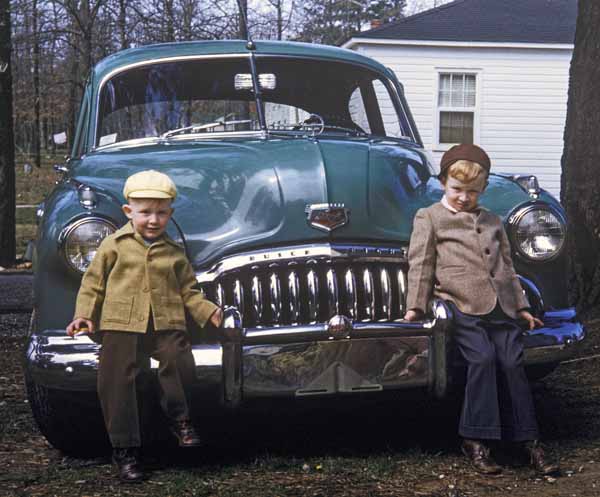
Mostly what I remember about this car is that the radio antenna was mounted at the center of the roof right above the windshield, and you could turn a knob and move it around. I think I can still smell the interior. Can you guess who’s who? OK, not hard, since Henry is older than me, and therefore taller than me at that early age. Also, my ears stick out.
Then came the ’54 (or possibly 1955), the ’57, the ’64, and the ’66.
These following photos are ones I found on the internet. The cars are similar to the ones we had.
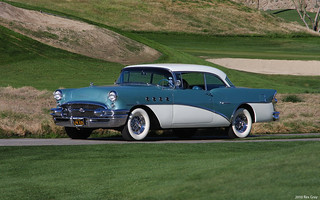
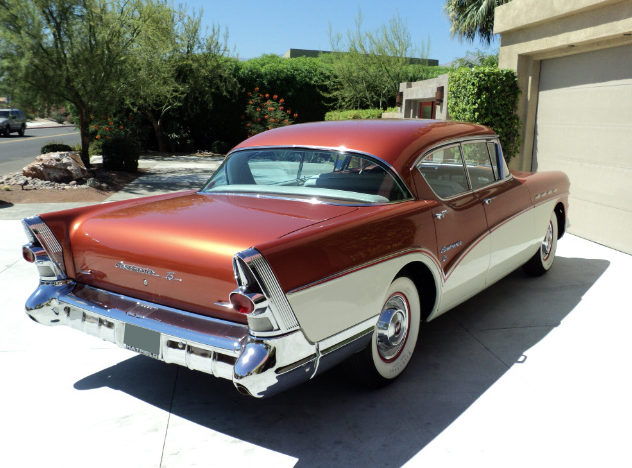
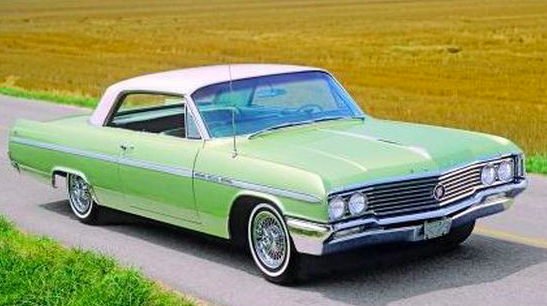
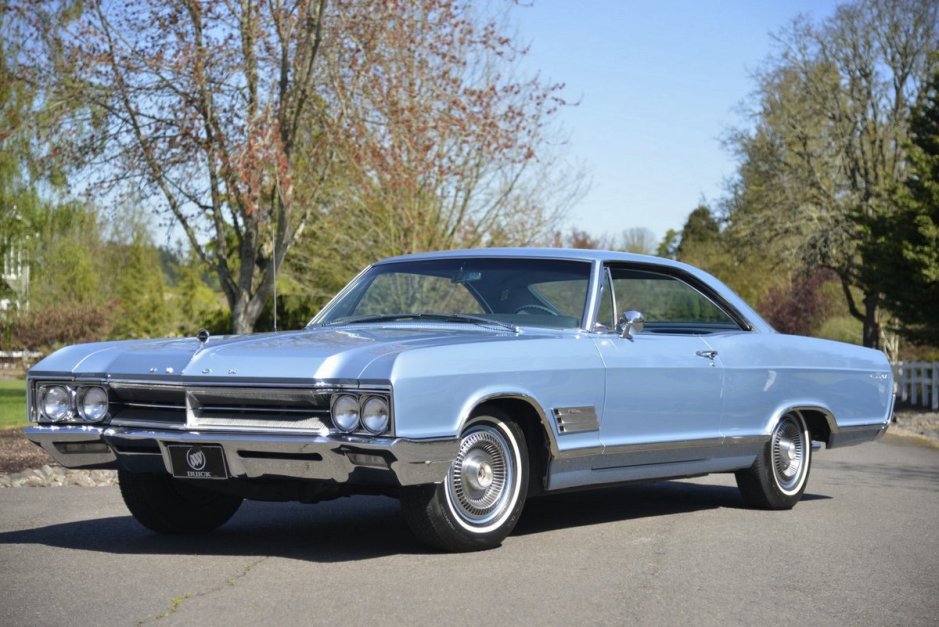
Shortly after we got the brand new 1964 Buick, Henry took it out for a ride in the rain and ran it into a telephone pole. That was a glimpse of the shape of things to come.
It was repaired and we drove it for another two years. We saw it around town for years after my father traded it for the ’66 Buick. We could always recognize it, not only because it was a fairly distinctive style, but also because the paint on the repaired front end didn’t fade like the rest of the body.
Then my father’s eccentric side surfaced. When Henry turned 16, he needed a car to drive himself and me to school. So naturally my father chose a Renault Dauphine.
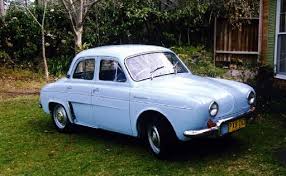
I don’t remember much about the Dauphine, or how long Henry drove it before someone ran into the back of it, totaling it. I’m not sure there was much to say about the Renault Dauphine, other than it was French and the engine was in the rear. It is a great cartoon car.
Next came the Austin Healy Sprite, the early bug-eye version. It was baby blue, or Robin’s egg blue to be more accurate. I never got a chance to drive this one before someone ran into the back of it, totaling it.
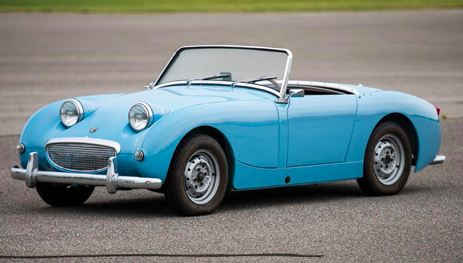
The Sprite was a funny and fun car. The hood, including fenders, was hinged at the front, so you tilted the entire front end up to check the oil. There was no trunk lid; you had to tilt the seat backs forward and toss your luggage back into the trunk. If you look at the doors, you will notice that there are no door handles. You had to reach inside the car to unlatch the door. One did not store valuables in a Bugeye Sprite.
Next came the 1959 Triump TR-3A. This photo is not our car but it is identical except for the interior, which was red in ours.

I want to hug this car. If we ever win the lottery, I will get one of these. I was 15 when we got it, and my father let me take it for the first test drive. But Henry got it. This car went through as much automotive hell as a car could.
One day he was competing in a high school track meet at another school, and ran too hard in the heat. He was overcome and kind of passed out. One of his classmates thought the emergency warranted taking Henry’s car and driving it back to their school. Somewhere along the way he managed to strip the first gear, because he didn’t understand what an unsynchronized gear was. So we had to get a new transmission, which this time included a synchronized first gear.
My father found a mechanic who could find a new transmission and install it. There is something a little fantastical about this episode. I can’t recall the mechanic’s name, but it sounded like it could only belong to an English sports car mechanic. His shop was somewhere in the country around Rome, I’m convinced located in some time warp because I have drive all over this county and have never seen it. By the time my father found a way to get the transmission fixed, reverse gear had also failed, probably because of loose first gear teeth floating around inside the transmission. He overshot the entry to the mechanic’s shop and had to continue until he found a driveway that sloped up from the road so he could drive in and let the car roll back out to turn around.
Henry took the car off to college at Georgia Tech. In his second year he began working in the co-op program at Oak Ridge National Lab in Tennessee. On his way up to Oak Ridge one night, he ran it off the road and rolled it. He was almost miraculously unharmed, but the convertible roof frame and the windshield were broken. After he got back to Rome we drove it around without a windshield for a while. You can remove this car’s windshield, or the frame that used to hold a windshield, by turning four large screws. It was actually made to be removable. Once Henry and I were stopped at a police road block where they were checking for inspection stickers. Henry pulled a piece of the broken windshield out of a door side pocket and showed the officer the sticker, which was still stuck to it. The cop just nodded and waved us on our way.
When I needed a car to get to school, I got the Triumph and Henry got a more modern Renault, an R8. This was a nice car for the time. The seats were like thickly padded easy chairs. The shift lever was vague, to put it generously, but the right gear was almost always where it was supposed to be.
Right after Henry got , he took off from home to show it to a friend who lived a couple of blocks away. The car left a trail of transmission fluid behind it. Someone had somehow left some kind of metal piece inside the transmission. That unknown metal piece got itself wedged between a gear and the aluminum transmission casing, and was punched through. The used car lot welded the hole shut, and it never gave any problems. I have no idea what kind of thing could have ended up in the transmission.
The Renault was totaled when a drunk Georgia Tech alumnus ran a red light and hit it broadside. It was drivable, in a manner of speaking.
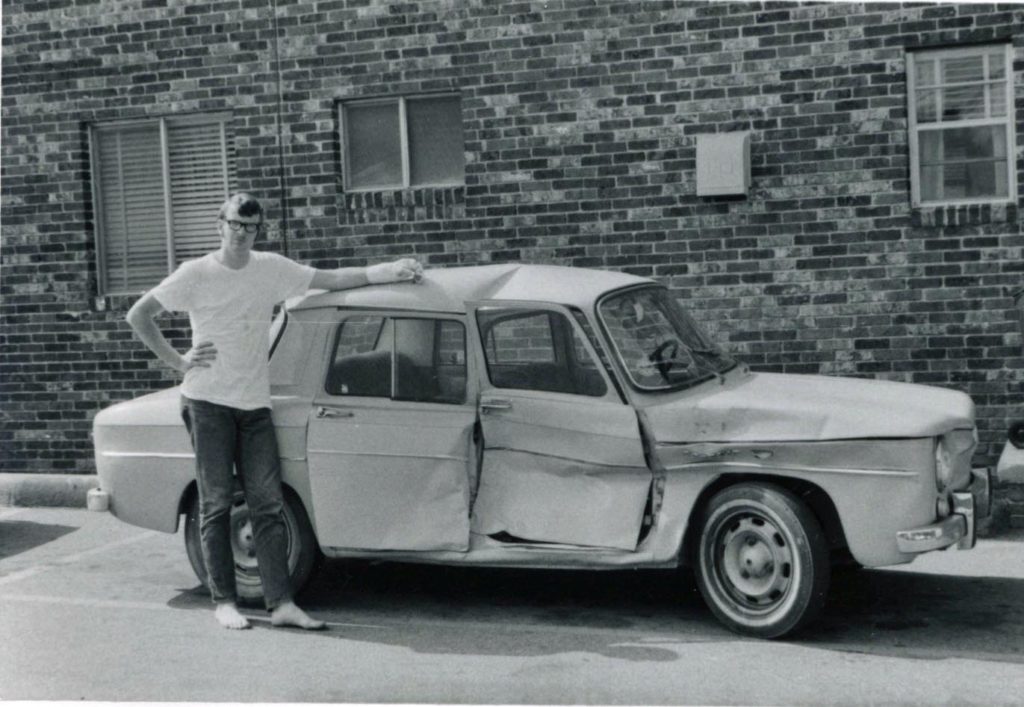
I think Henry had to start driving the Triumph again after the R8 went away. That left me without a car, so my father selected a specimen of one of the worst cars ever made in England, a Morris Minor. I’ll take suggestions, but I think this is it.
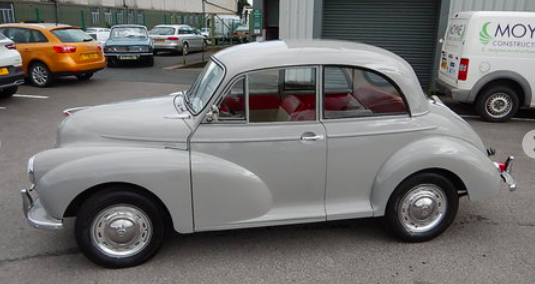
Again, this was not our car, but it could be a twin, including the dark red interior. Ours was perhaps not the best example of the type. The brakes were bad, and there was a knocking rod in the engine. But it got me back and forth to the local college I first attended, until we could get something slightly better.
Next up for Henry was a Volvo PV544, around a 1960 model. This is not his car, but it’s pretty close.

This was the first car Henry drove for any length of time without wrecking.
I loved this car, too. If we ever win the lottery, I will get one of these — maybe two, one in black and one in deep red. The black will be for old times’ sake, and the red because it looks really cool, especially from the back.
Since Henry had the Volvo, I got the Triumph. I drove it to high school, and I drove it around town during the summer. Of course there was no air conditioning. Are you crazy? Dan, my best friend from high school (and my current brother-in-law) and I would drive around all day on a summer Saturday. It had no power steering, of course, and no power brakes, so it required some exertion to drive at city speeds. I would be exhausted by the end of the day.
Winters were not much better, but in a different way. The Triumph had side curtains.
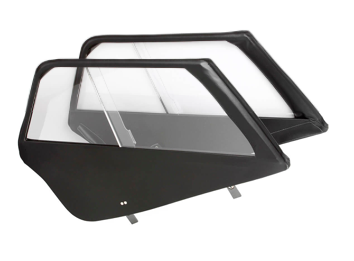
Side curtains are completely removable. The ones here are $1299 from Moss Motors. Here is a link, in case you need a new pair. Those two metal tabs at the bottom fit into sockets on the interior of the door. If you need a replacement for the sockets on the doors, you can get a chromed one for $99.99. Yes, one, as in not two.
And this is why you should never actually rebuild a classic English sports car, but rather buy one that someone else has spent their entire fortune rebuilding.
Side curtains do not prevent drafts. They are more in the way of a suggestion. The heater core in a TR-3 is a round radiator about the size of a gallon paint can. It sits below the dash right over the transmission hump. There is a fan that draws air though the cylindrical radiator and pushes it out the bottom Two semicircular doors are fitted to the bottom. They are hinged in middle so they can be opened to direct air towards a small spot on the driver’s right thigh, or a small spot on the passenger’s left thigh, or perhaps to both driver and passenger, if you can get someone to ride with you in the winter.
The fan for the heater, which, again, is more of a suggestion than an actual “heater”, is controlled by a switch. The flow of hot water is controlled by a faucet under the hood. It looks like something you would connect your garden hose to. And I did say that it’s under the hood. That is, to turn on the heat, you need to stop the car, open the hood, and turn a faucet on. This is something one typically does once a season, on warm days relying on the fan to actually control what little heat that is produced by the heater core. It is not generally a problem even on the warmest winter days.
When I took the Triumph to school in Atlanta, it was my turn to get into a wreck. I had an after-class job, and was driving in rush hour traffic back to my apartment. A young woman in a new Corvette ran into the back of the Triumph. The collision left the Triumph slightly bent. The Corvette driver wanted to give me a few dollars not to report the accident, but I refused. Her insurance company totaled the Triumph, but let me keep it. After all, it was essentially worthless. Her car didn’t look bad, but I noticed two cracks right over the top of the front wheel wells. I imagine it was not cheap to repair.
The Triumph stayed in my brother’s driveway near Georgia Tech for a long time. I finally found someone in town who had a good, straight frame, and a separate good, straight body.
As I write this, I’m having a hard time believing that could have happened. It makes me wonder if I might be living in some kind of boring, unlikely novel.
I’ve thought about this some more, and here almost 50 years later, with a PhD and much improved understanding of the physical world, I cannot think of a single plausible explanation for how I got the frame and body from the place where I bought them to my brother’s driveway. I have no memory of it at all, and I can’t imagine how I did it, or if I even did. If this is a novel, it has a lot of plot holes.
Anyway, we unbolted the body from my bent Triumph and took it off. It was held on only by a few bolts. Then we mounted the running gear on the replacement frame. Then we picked up the straight body, lowered it onto the frame, and bolted it into place. We put my old interior into the new car, and hooked up a few wires and tubes so it would run, and it was done.
So, we repaired the car by essentially replacing everything, and then put our engine and transmission into it. Of course it had a different VIN, but no one ever looked at it, and we never told anyone about it.
I do not remember what we did with the spare parts, namely a bent automobile body, and a bent automobile frame. I know they wouldn’t fit into a garbage can.
I drove the repaired Triumph for a while before I got my Fiat, which I have written about and which I drove for a long time. Henry kept the Triumph.
A few years later he told me that he had lent it to a friend, who was driving somewhere on I-285, the Atlanta perimeter road, when it caught fire and burned. There was no repairing it after that.
Most of our automotive experiences after this period were not particularly remarkable. Henry got a Saab, which was only a little strange. I got a 1972 Triumph TR-6, which I wish I still had. Then I got a 1971 VW bus, which I also liked quite a lot, despite the fact that it was hot in the summer, freezing in the winter, struggled to maintain 65 on the highway, and used your feet as crush space. Then I got a little Honda Civic station wagon, which was roughly the shape and color of a lemon. All it needed was a complete engine rebuild, and then it was good to go, assuming you checked the oil frequently. After that, we drifted into pure conventional automotive life.
If this really is a boring novel, it never gets any more exciting after those early days.
WOW, Mark! That is quite a history of your automobile adventures with Henry. You had some fantastic vehicles back in the day. My parents were more Chevrolet people who then transitioned to Oldsmobile. I was always pretty much a VW girl!
Robin — I wish I had some of those old cars, although it’s probably better for them to live in my memory. I’ve had several VW’s, too, a bus, two old Jetta diesels, a 2001 Golf diesel, and then a 2011 Jetta diesel. We traded the Jetta for a Subaru just before the big diesel emissions testing scandal killed the market for VW diesels in the US.